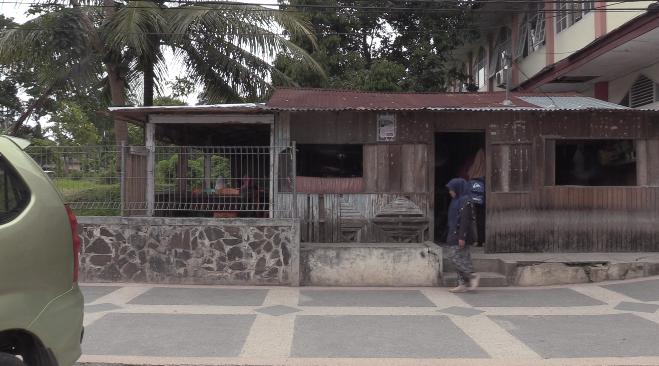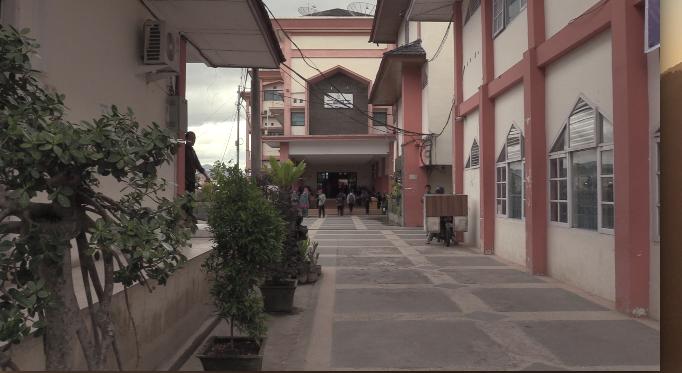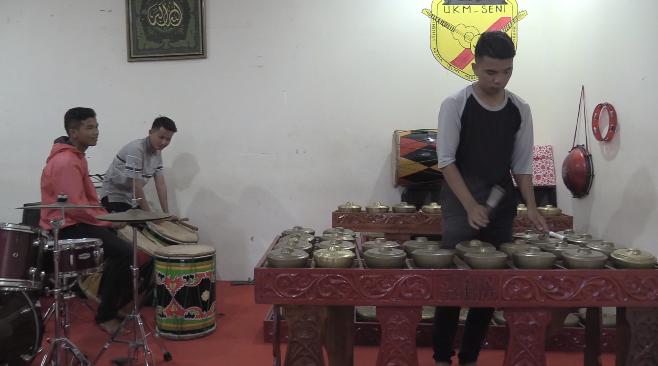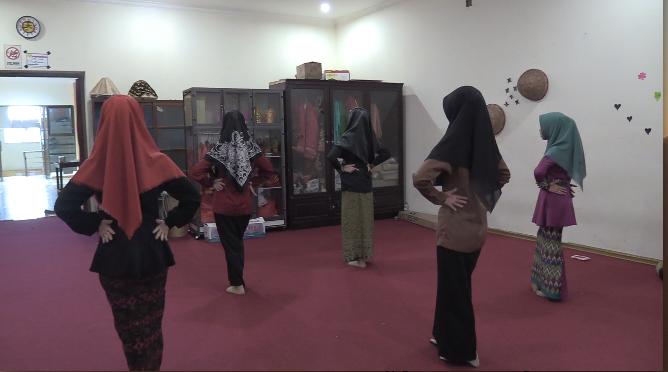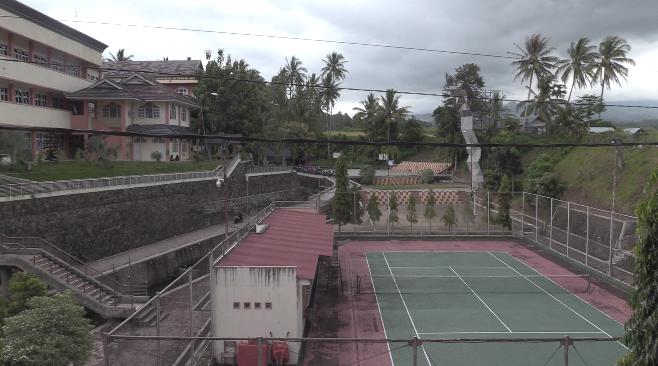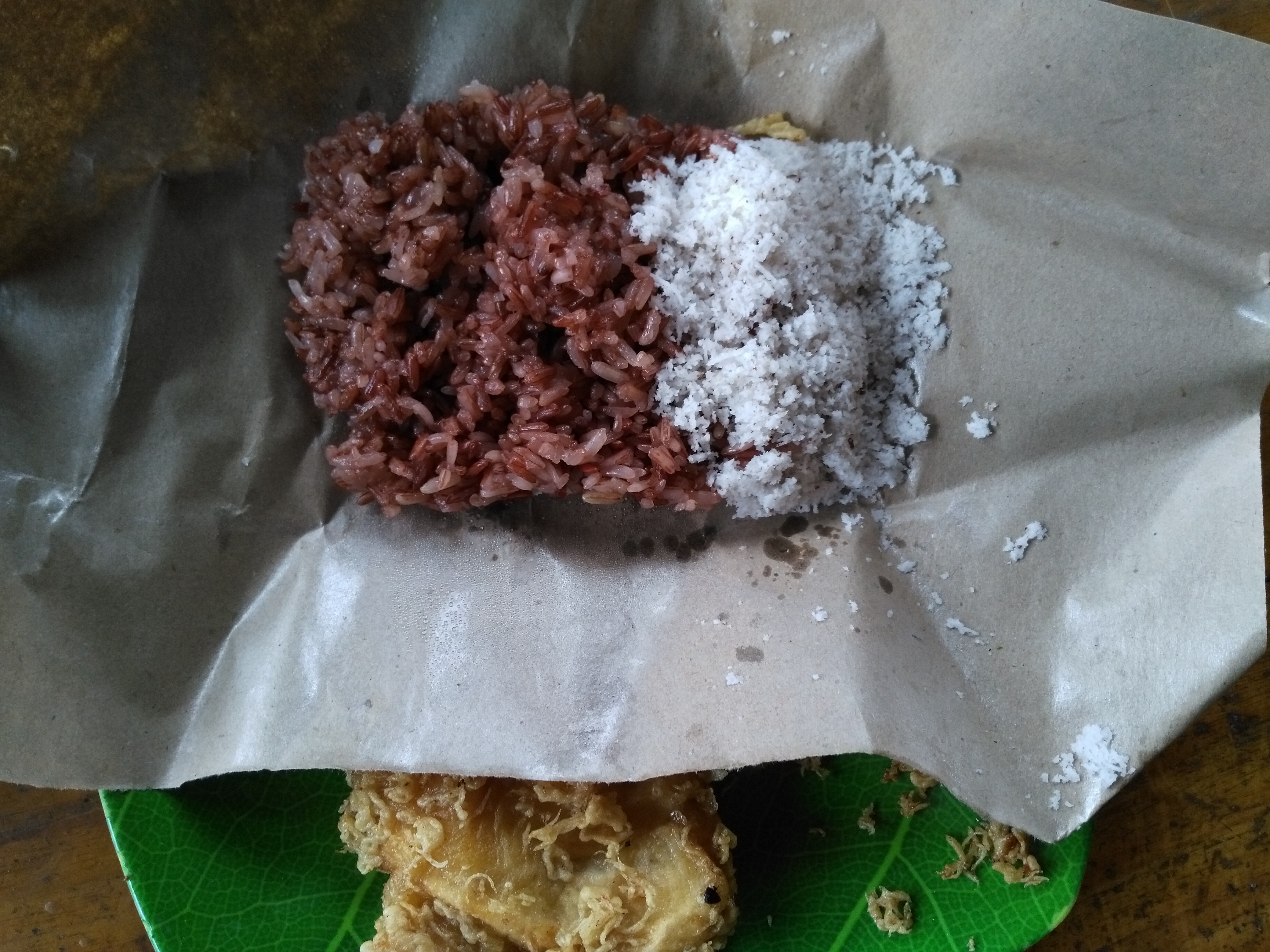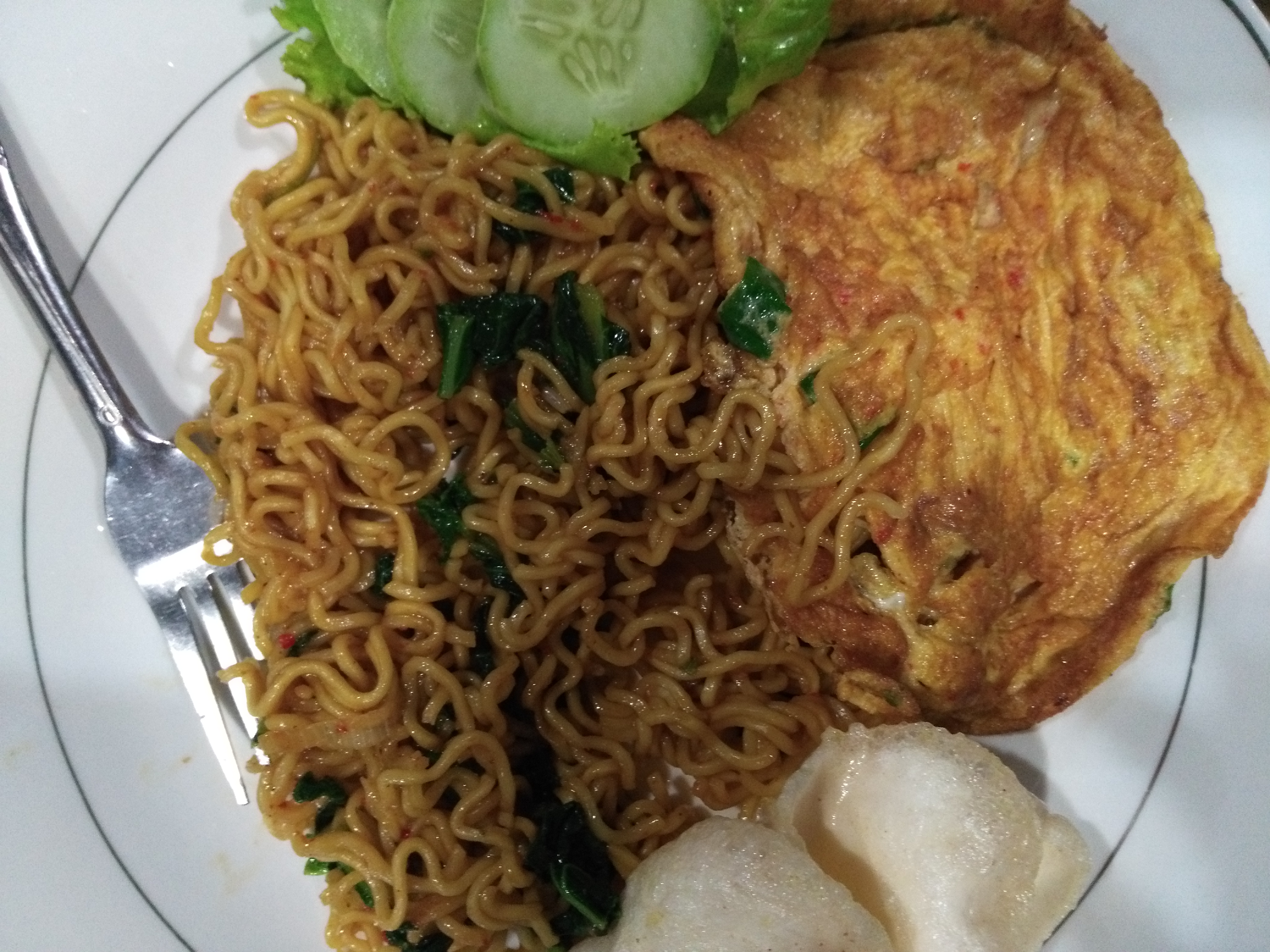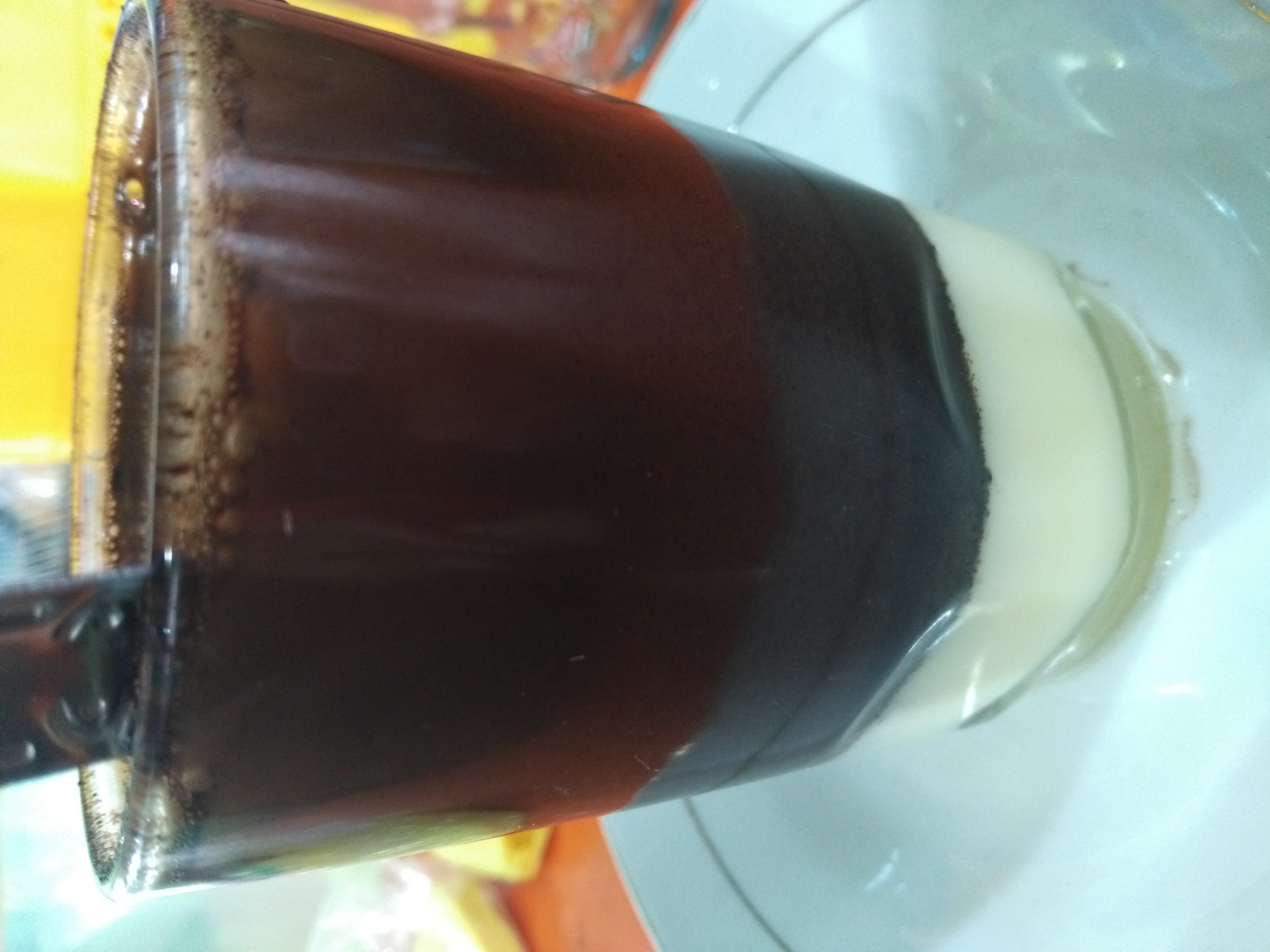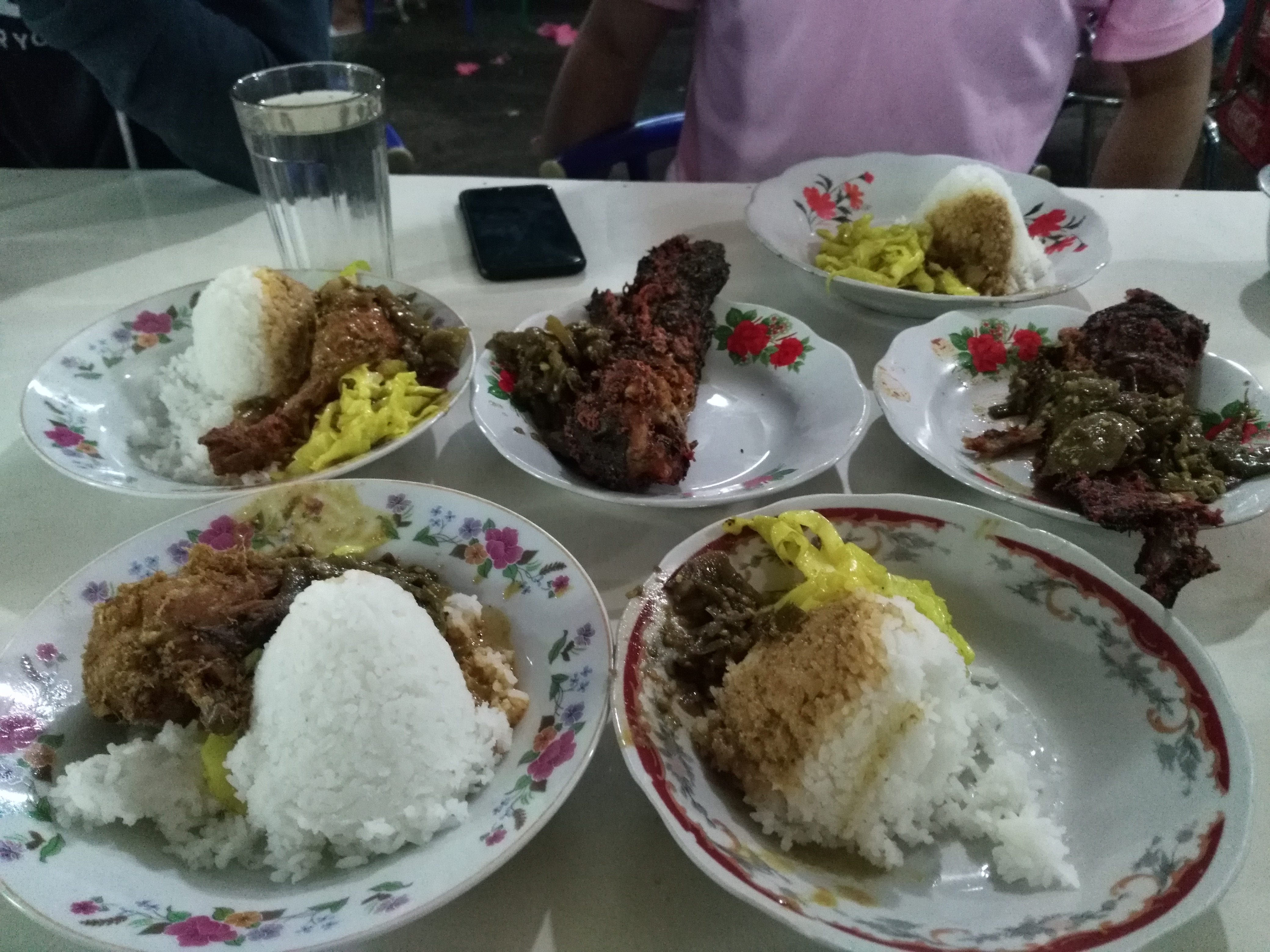Living as a Sumatran Highlander
15 Oct 2017
Reading time ~26 minutes
Getting to learn more and more about the peculiarities of Minangkabau culture here in the highlands of West Sumatra has been a real treat. This past week, I started out in the charming town of Batusangkar, interviewing exclusively lecturers and professors at IAIN Batusangkar (State Institute for Islamic Studies, Batusangkar). Having wrapped up my interviews with there, I proceeded to meet students, lecturers, and administrators at ISI Padang Panjang. With the help of a few key individuals, I was able to complete twice as many interviews as I’ve averaged on a weekly basis so far on my travels. The sheer amount of raw data I collected this past week has left me with no choice but to split up my interview commentary from this past week into two blog posts (this one and the one to follow). Unlike my time living in more or less city centers in my past destinations, the majority of my time this week was spent on college campuses. This entailed that most of my formal and informal interactions were with students and lecturers. I apologize in advance, because this post and the next one’s gonna be relatively hefty and monolithic. This post’s focus will be on my time in Batusangkar (first half of my past week). Here are some random shots of the campus.
Mr. Irwan Malin Basa, Dr. Sri Yunarti, and Mr. Chardinal Putra
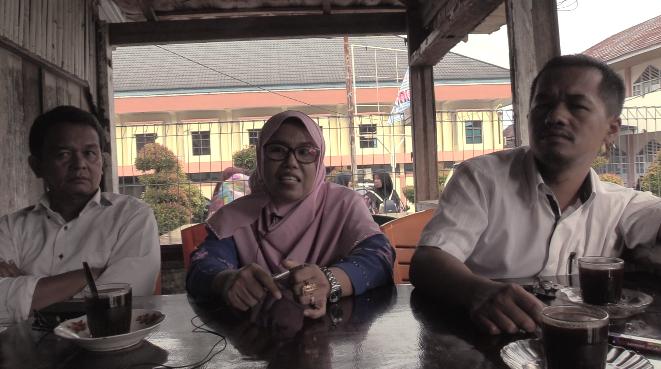
Mr. Irwan Malin Basa
While in Batusangkar, I was under the care of Mr. Irwan Malin Basa, a lecturer in English and head of Minangkabau cultural initiatives at IAIN Batusangkar (State Institute for Islamic Studies, Batusangkar). My time in Batusangkar would have been much less productive and convenient if not for Mr. Irwan’s assistance in finding housing, transportation, connections with informations, resources regarding Minangkabau culture, and language interpretation. Aside from his professional work, Mr. Irwan serves as the head of his tribe, Dalimo Panjang, with over a hundred members. Mr. Irwan must be accountable to each and every family in this group of extended family members. He must help arbitrate general relationship woes and divorces, facilitate marriages, manage deaths, and resolve potentially violent or otherwise bitter conflicts. Born in 1974, Mr. Irwan attended Islamic junior and senior high schools during the day and his surau in the evenings. At one point in his life for a stretch of four years, he would sleep overnight at his local surau and then go back home in the morning to bathe and eat breakfast before heading out to his Islamic day school - a long time to be at school indeed. Mr. Irwan complete his master’s in language and culture education with a focus on studying, researching, and documenting the local language and culture of the Minangkabau. He’s written 14 books, hundreds of articles, numerous translations, and original poetry too.
Mr. Irwan’s views on the permissibility of artsing (i.e. arts producting and consumption) in Islam are largely informed by his work as a Minangkabau cultural preservationist. He believes that as long as musical content is not directly opposed to the fundamentals of Islam, Muslims should not waste their time obsessing about the details of the permissibility of every possible form of artistic expression. Having a strong background in both Islamic and cultural studies afforded by his dedication to attending the local surau from his childhood, Mr. Irwan’s example demonstrates the remarkably integrated nature of traditional Minangakabu pedagogy. If this degree of integration between Islamic and indigenous cultural education in West Sumatra is any indication of Islam’s potential to be peacefully and fully absorbed by differing peoples and cultures, I would argue that the Minangkabau example is a notable success story in the history of Islamic proselytization and civilizations. Mr. Irwan and others in his academic circle tell me that the overwhelming majority of native Minangkabau do not think twice about the impregnable integration between Islam and traditional arts and culture. Islam factors into indigenous arts in the form of texutal content, matters of performance practice and decency as described in the Quran and Hadith, and as a general spirit of religiosity or spirituality that permeates arts making and daily living. Most Minangkabau and Muslims more generally that I’ve connected with back in the US and while on my travels simply partake in the variety of musicking in society without thinking twice about their comprehensive ramifications in light of sharia. Most moderate Muslims simply refer to their impressions or limited knowledge of the fundaments of Islam and their own moral compasses and common ethical sense to gauge whether a given piece of art is un-Islamic. As for nominal Muslims and the lesser committed, many of whom are of the younger generation of Indonesians I’ve met, virtually anything goes in the realm of performing arts.
Dr. Sri Yunarti
Dr. Sri Yunarti is a lecturer of sharia at IAIN Batusangkar (State Institute for Islamic Studies). Sr. Yunarti has had a truly comprehensive engagement with Islamic practice, doctrine, and history from a young age. She attended religious schools through the bulk of her primary and secondary schooling days (as opposed to general/national school), and she studied sharia (Islamic law) at Islamic universities for her bachelor’s, master’s, and doctoral degrees. From a young age, she was also associated with Fatayat NU, the young women’s wing of the biggest socio-religious organization in Indonesia, Nahdlatul Ulama. As part of this organization’s activities and in other capacities, Dr. Yunarti engaged with various forms of both religious and secular music making. In addition to her engagements as a lecturer and her bents for music and theater, Dr. Yunarti heads an organization dedicated to women entrepreneurship in Batusangkar.
Dr. Yunarti preceded our discussion with the following caveat: specific discourse surrounding the permissibility of artsing cannot be found in the Quran. Additionally, it seems to not be a central point of discussion in the prophetic traditions as well. Nonetheless, Dr. Yunarticlaims that the Prophet Muhammad loved music very much, and that, despite its reservations, Islamic doctrine ultimately condones music making. As evidence for this, she told me that the Prophet Muhammad was highly pleased by the sounds of salamanders while retreating in caves. Additionally, As with several of my prior informants, she also mentioned the story of how Medinan locals welcomed the Prophet Muhammad and his first followers with music akin in instrumentation traditional Islamic music of the Minangkabau featuring mostly voices and percussion. Even more, Dr. Yunarti mentioned that at least one occasion, when Muslim soldiers were not directly engaged in battle during war times, the Prophet Muhamamd encouraged his troops to pass time and boost morale by making music using whatever tools they had at their disposal including their weapons made of metal.
Dr. Yunarti told me that it’s especially difficult for many Minangkabau to accept the views of anti-music individuals Muslims in their communities for a number of reasons. Foremost, Minangkabau are particularly proud of their cultural heritage, which boasts a potpourri of traditional performing arts genres that factor into all walks and occasions of life - everyday listening and birthday, wedding, and death celebrations. Among Indonesia’s many indigenous ethnic groups, Minangkabau are known to be particularly entrepreneurial bunch especially when it comes to exporting their culture - key cultural producers and preservationists are hopeful that Minangkabau music can find its way to all corners of the world. Minang immigrant communities are thus rather vigilant to maintain artistic markers of their cultural identities wherever they find themselves working, doing business, or studying in the world. Saluang (bamboo flute) playing is a particularly valued skill in traditional Minangkabau society which commonly factors into the curriculum of an average surau. To counter anti-music individuals who cite the an infamous anti-flute playing hadith</a>, music proponents such as Dr. Yunarti emphasize that the permissibility of music making has less to due with the exact instruments utilized or the sounds they produce and more to do with the intention behind playing music. In that famous hadith, it is implied that Satan uses the flute to entice people to give into their ill-advised whims and sinful desires. I would argue that just as Satan could realize his intentions to deceive someone using the enticing sounds of a flute, it goes without saying that a well-intentioned individual could use the sound of a flute could instill peace and benevolence for recreational or therapeautic application just the same.
Mr. Chardinal Putra
As with most Minangkabau who grow up with the traditional way of living, my second informant, Mr. Chardinal Putra studied the typical things one encounters at one’s local surau - randai, talempong, panjat silat, etc from a young age. From junior high school onwards, he attended allegedly the best pesantren (Islamic boarding school) in Gontor, East Java, Indonesia for seven years. Thereafter, he did a gap year in Lombok, serving as an imaam for a mosque there. Having engaged in full-time work for the faith, he attended Padang State University for his bachelor’s degree in tafsir hadith (hadith exegesis). Finally, he completed his master’s degree in Islamic civilizations in the same city. While in university, he was an active member of two major student organizations with branches throughout Indonesia - Islamic University Student Association and Muhammadiyah University Student Organization. In addition to his contributions to these two organizations, he founded the student organization for theater at Islamic University Padang. Mr. Putra also casually dropped the fact that he’s a competent music therapist and hypnotizer, as if he simply does therapy and hypnotizes people every once and a while for fun if anyone’s down. He’s currently a lecturer of Islamic civilizations at IAIN Batusangkar.
I have to admit being visibly surprised when Mr. Putra told me that his pesantren headmaster (kyai) was a rock drummer and guitarist. Mr. Putra recounted how his headmaster would uninhibitedly shred on the guitar and drums during the school’s annual convocation ceremonies to greet each incoming class. My impression of Islamic boarding schools before coming to Indonesia was rather monolithic. Upon hearing the word madrassah (Islamic school) prior to travelling in Indonesia, I would instinctually think about rows of young children seated on the ground, mindlessly see-sawing forwards and backwards while reciting at the top of their lungs Quranic verses which they neither understood nor cared about, supervised by an older man with a stick in hand to physically discipline slackers among the bunch of seven year olds being indoctrinated. Admittedly, not the prettiest picture. Meeting people like Mr. Putra whose madrassah headmaster was a casual rockstar has shaken my stereotypes about traditional Islamic school environments and pedagogy. It’s undeniable that there are indeed a number of Islamic boarding schools in Indonesia and elsewhere that are opposed to music making entirely (one of my previous posts relates how my request for an interview with an Islamic boarding school headmaster was turned down because of this reason). Mr. Putra’s madrassah is clearly unlike those Islamic boarding schools. A substantial amount of money was allocated by the school administration for annual productions of mammoth concerts featuring competitions between bands playing music ranging from jaipongan, rock, and traditional Javanese and Minangkabau music, etc.
Mr. Putra reminded me of a key aspect of Islamic history in Southeast Asia that sets it apart from the histories of other Islamic civilizations. The introduction and acceptance of Islam to Southeast Asia was largely enabled by Muslim traders and missionaries with rather moderate and sufistic sensibilities. The image that Islam’s earliest representatives in Southeast Asia propagated was one of peace, respect, and, perhaps most importantly, economic and political advantage. As a universal language relatively unconcerned with the strictures of Islamic law, music was remarkably effective to the effect of dakwah (the spread of Islam) in Southeast Asia. The situation in Southeast Asia can be contrasted with the earliest days of Islamization as well as much of the contemporary dakwah efforts in liberal democracies in North America, Europe, and Australia. That the earliest days of Islam’s expansion were remarkably bloody need not be described in detail in this post. Jihad was a particularly relevant virtue during the days in which Islam had not yet earned its reputation as the second larlastgest religion in the world. The rhetoric of preachers in most mosques in the West today is predominantly one of moderate (“center”) to orthadox (“right-wing”) Islam. In other words, Sufism, securely left on the ideological spectrum of Islam, is underrepresented in the West and more generally in the world today. In many parts of the world throughout history, Sufism has been a persecuted Islamic sect.
The reasons for this lack of a Sufi presence in the world today is extraordinarily complex and therefore beyond the scope of this blog post. Many Minangkabau like Mr. Putra are very proud of the artistically rich and pluralistic legacy of Sufism in West Sumatera. It was more than clear from the sound of Mr. Putra’s voice and his facial expressions that the the growth of puritanical Islam in Indonesia was nothing short of aggravating and even enraging. Mr. Putra told me that many Minangkabau including himself would be more than willing to both metaphorically and literally fight people who go around inflexibly vilifying musicians and dancers in society using his Minangkabau martial arts skills.
Ms. Rini Anita
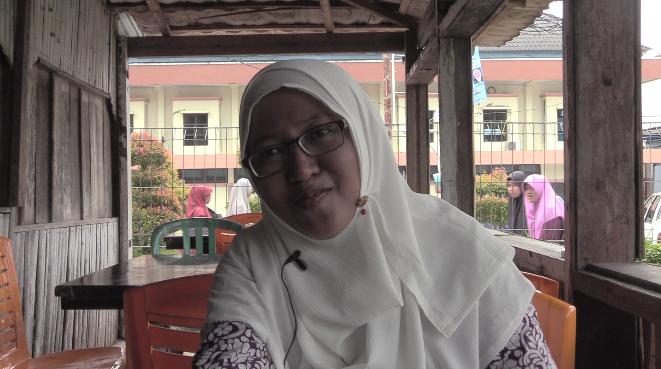
My next interview in Batusangkar was with Ms. Rini Anita, an English lecturer at IAIN. Mr. Anita’s mother was a religion teacher at a general high school in her hometown of Batusangkar, so Ms. Anita received informal lessons in Islamic prayer and doctrine from early childhood at home. Additionally, she often attended her local surau for Quranic studies. Ms. Anita has been part of the English faculty at IAIN for several years now, but she only recently took on the role of adviser to the student performing arts organization on campus. In this capacity, she helps to determine content for performances, arrange for resources needed for performances, direct rehearsals, and manage event logistics. Ms. Anita does not have extensive experience with musicking or arts management other than casual extracurricular engagements in high school revolving around pop music. Currently as adviser of the student arts organization on campus though, she’s become more interested in traditional arts of the Minangkabau. Despite her lack of training and experience with performing arts, Ms. Anita plays a pivotal role in realizing what exactly goes down during regular performances on campus.
Ms. Anita shared with me an issue that has sprung up repeatedly vis a vis the permissibility of the dances she’s directed and sanctioned in her performing arts organization. At the most recent event on campus, a group of women dancers in the organization performed a traditional Minangkabau welcoming dance. The dance demanded traditional costumes which were slightly tighter and more revealing than the dress code standards at IAIN prescribe for women, i.e. a jilbab and loose skirt. Several lecturers on campus approached Ms. Anita before and after the show to express their concerns regarding the appropriateness of the group’s use of makeup, costume choices, and body movements. It’s important to reiterate that IAIN Batusangkar is one of many Islamic state universities in Indonesia. The strongest criticism among the lecturers who disapproved of such elements of the group’s dancing came from a lecturer in one of IAIN’s Islamic departments. Ms. Anita suspects this lecturer in particular would prefer that the women in her group simply refrain from dancing in the organization’s future events, though this faculty member would not make such a sentiment, if it existed, explicit. What most of the faculty members who took issue with the dance did make explicit, however, was that the women in the dance ought to use looser clothing, less to no makeup, and less to no jewelry. Some of these lecturers went so far as to pressure women dancers a part of the arts organization who were in their modules to withdraw from upcoming performances before especially before due dates for projects or imminent exam dates. Ms. Anita has a difficult time sympathizing wich such lecturers because she maintains that performing a traditional welcoming dance does not contradict the essence of Islamic law. She holds that the kinds of dancing she encourages in her arts organization is devoid of sensuality or sexual intent. Rather, she highlights dance routines and dance forms that represent local traditions, values, and wisdom of the Minangkabau. Ms. Anita emphasized that women have always danced traditional dances in Minangkabau society, and in today’s day and age, women are more and more able to engage in arts making especially outside of religious contexts. It was particularly disappointing to her that the opponents to performing arts she’s encountered thus far are generally unable and/or unwilling to provide rigorous arguments to justify their anti-arts assertions. In addition to controversies surrounding dance, Ms. Anita has heard from people from time to time that women should not be allowed to sing whatsoever. Nevertheless, Ms. Anita tells me that, in her experience, women dancing generally poses more problems in strict Islamic contexts than women singing or other realms of performing arts.
Dr. Emrizal Datuk
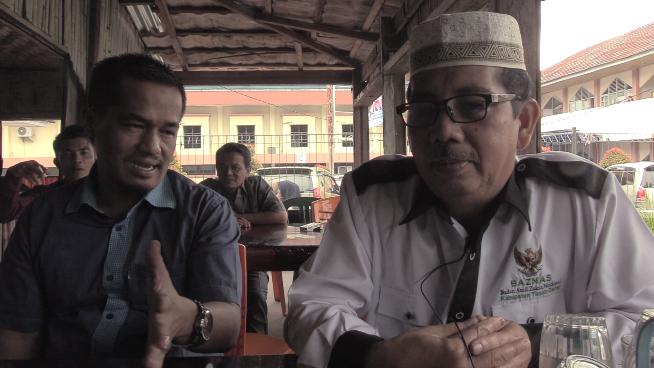
My meeting with yet another lecturer of sharia at IAIN Batusangkar, Dr. Emrizal Datuk, was the speediest of the interviews I did this week. Similar to Dr. Yunarti, Dr. Datuk attended madrasahs (Islamic schools) for his primary and secondary schooling followed by higher education in sharia. In addition to lecturing, he heads his department and runs an NGO for human empowerment.
Dr. Datuk dove right into the debate by succinctly characterizing the two opposing camps of ulama (Islamic scholars) on the topic of the permissibility of musicking (i.e. in this scope, music production and consumption) in Islam. The pro-music camp insists that the Prophet Muhammad never explicitly forbade music making. The meaning of “explicit” is crucial in this assertion, but I was not able to get a clearcut clarification from Dr. Datuk on this front. Pro-music ulama tend to linger on the various hadith in which the Prophet Muhammad reacts positively to acts of musicking. Such ulama maintain that as long as musicians refrain from any of the following three major no-no’s, all is well:
-
Cause people to forget or neglect God and His mandates (e.g. avoiding ritual prayer due to music-related obligations). I would argue that this caveat applies to any activity whatsoever, but it’s nevertheless particularly relevant to musicking.
-
Cause people to do or feel anything that is typically haram (e.g. highly sensual music that causes or facilitates sexual arousal or activity)
-
Music should not oppose Allah and or any of His prophets whatsoever (e.g. music cursing God, Satanic music or music accompanying Satan worship).
Each of these caveats seem rather obvious, which suggests that in the realm of musicking, most anything goes within the pro-music camp of ulama. On the other hand, anti-music ulama deem that the majority of musicking one finds in the world today is ultimately the work of Satan. They base their conclusions on specific selections from the Quran and Hadith which I do not have the time to get in to in this blog post, but certainly will do in a future post.
Siska

The next couple of interviews set themselves apart from the others I’ve done so far, because they largely concerned the permissibility of dancing for women in Islam. The first of this couple of interviewees was Siska Apresiya, a candidate for a master’s degree in dance at ISI Padang Panjang. Though she never formally studied dance from a young age, Siska’s participation in a few performing arts events and activities in junior and senior high school convinced her to declare dance as her undergraduate degree major. Sisak’s mother provided her with basic Quran lessons from a young age, but she never attended religious schooling per se. She conceded to me that her knowledge of the religion was thus rather limited. Nonetheless, Siska considers herself and most members of her family to be devout Muslims. It’s important to note that in her family’s case, being a devout Muslim does not necessarily entail strictness or narrowmindedness on topics of arts permissibility and related topics. Sure enough, there are some devout Muslims who object to any public display of women dancing whatsoever on grounds of a woman’s basic obligation to be modest and maintain her honor and chastity. Siska, however, hadn’t faced criticism for her involvements with dance from family and friends for most of her dancing career. That changed when she decided to remove her hijab for particular dance routines out of consideration for artistic expression. At first, Siska’s parents objected to her decision to dance in public without the hijab. With time, they began to accept the fact that she did not mean to display her body to the public to flirt with or sexually entice men.
Though most of her family members are now on her side, a few friends and peers of hers at ISI Padang Panjang continue to object to her artistic choices. A particularly vocal friend of hers told her that she does not have the power to force Siska to stop dancing, but she maintains that a woman’s choice to show her hair in public is generally unacceptable and especially illicit in the context of a dance performance. As with some of the male ex-musicians I’ve interviewed and featured in this blog, this friend of Siska’s is a hijra or “born-again Muslim”, so to speak (I should emphasize that hijra in this context differs drastically from the context in which it is used in South Asia to refer to a class of “third gender” or transgender humans). At first, such criticisms really cut deep. She would sincerely question the permissibility of her craft, feeling emotions ranging from guilt to anger. Now, Siska tells me that she’s come to a firm conclusion regarding her choice to remove her hijab when it comes time to dance. She knows deep down in her heart and consciousness that her engagement with dance has nothing to do with promiscuity. Rather, her engagement with dance center on the communication of ideas and culture through body movements. As any serious dancer can attest to, costuming plays a major role in this expression. If Siska wishes to communicate some idea relating to the specific experience of wearing a hijab, it does not help if she wears a hijab in every single routine she performs including pieces that have nothing to do with the hijab conceptually. At the end of the day, Siska assured me that only a tiny minority of people in her social sphere have ever directly objected to her philosophy regarding performing arts and a Muslim woman’s religious mandates.
Dika
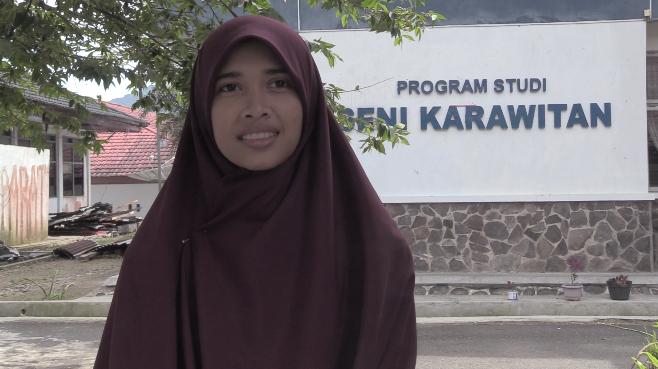
In contrast with Siska, my second student interviewee at ISI Padang Panjang, Yuni Kartika Sari (aka. Dika), had stricter views on the permissibility arts making in Islam. Dika is an undergraduate student of crafts and textiles in her third semester at ISI Padang Panjang. She studied Islam and Quranic recitation throughout her primary and secondary schooling days at religious institutions. She grew up with a knack for visual art, because her father is a full time visual artist with expertise in painting, drawing, and calligraphy. While in junior high school, she engaged in a variety of traditional performing and martial arts. Things took a fairly big turn for Dika when she joined an organisation in high school called Anisa, a platform for the instruction, discussion and debate of issues relating to the status and role of women in Islam. A fair amount of the discourse Dika encountered in Anisa concerned how and why to be a proper Muslima (Muslim woman). The only men to be found in regular Anisa meetings and events were among the ranks of the organisation leaders, debate arbiters, and guest speakers. Joining Anisa was mandatory for all first year female students at Dika’s high school. Initially, Dika was annoyed by the fact that she had no choice but to participate in Anisa meetings and events. By the end of her first year in high school, however, she was completely convinced of the need for young Muslima to be knowledgeable about and concerned with the topics that Anisa got her to start thinking about. Dika’s priorities soon shifted from simply educating herself on the issues to instructing others and encouraging others to debate about the status and role of women in Islam. Thus, she became the student leader of Anisa at her high school and took it upon herself to export the organization’s activities to her junior high school and her own village in West Sumatra. Though Dika faced little issues in bringing Anisa to her junior high school, the situation was more complicated in her villge. Village elders initially protested her efforts on the grounds that Anisa downplayed the importance of traditional Minangkabau customs and arts in its efforts to thoroughly Islamize the hearts and minds of girls and young women. This objection is indicative of a larger historical impasse between those on the side of religion and those on the side of tradition in West Sumatra. (read more about the origins of this conflict leading to the Padri War). This history sheds light on how a well-intentioned young woman like Dika might be viewed with suspicion from members of her own tribe in her efforts to teach girls and other young women how to be a proper Muslima. In reaction to this initial resistance, Dika compromised on the amount of weight given to religious topics over matters of tradition and culture in her Anisa meetings. Thus, Dika began incorporating lessons and rehearsals for Minangkabau performing arts and customs with Anisa’s more typical instruction and debate about the status and role of women in Islam.
Especially after adopting the full-fledged jilbab, Dika tells me that she experienced a remarkable change in the way boys and men viewed and dealt with her on a daily basis. While only wearing the hijab or not covering her hair at all in the past, boys would casually approach her to flirt, tease, or simply ask to hang out or go here or there with her. During those days, she did not make much of such relationships and casual encounters. After embracing the jilbab, Dika immediately noticed that boys and men more often greet her with the Islamic greeting, “Assalamu’alaikum”, and they generally respected her space and body more so than before. Dika’s testimony implies that she feels less like a sexual object for men’s gratification and more like a dignified human being who ought to be judged by her skills and talents rather than her looks and sex appeal by society at large. Even so, what Dika told me next was rather striking to me. She told me that she will never again return to dancing and music making herself, because she believes that such activities are not appropriate after a young woman after she has begun to observe the jilbab (covering oneself after puberty). She’s believes a woman should never voluntarily move her body in front of an audience regardless of how modest her clothing and body movements may be. This rather uncompromising attitude begs clarification and sound justification. What exactly constitutes “dance” to those who hold this worldview? If a woman simply stands on stage for ten minutes, could that qualify as dancing, similar to the way in which some people consider silence to be music? Or, if a woman flicks one of her fingers on stage in the course of ten minutes, is that more legitimately dancing as opposed to simply standing still? I suppose the next step might be if a young Muslim woman wishes to dance a highly symbolic piece about the erasure of identity in the army in which she is covered from head to toe and simply marches back and forth on stage for ten minutes. What if there are no men in the audience? Couldn’t a homosexual Muslim woman performer and a homosexual Muslim women audience member, having been affected by the former’s dance, still lust after each other in such settings? What if a woman or women wish to dance for a private event only attended by family members who qualify to see her “beauty” in plain view as described in the Quran, An-Nur 24:31.
In most traditional forms of Minangkabau dancing, women’s costumes and body movements are not mean to be erotic, as compared with the culture of courtesan dancers in 7th century Mecca or your average music video featuring Niki Minaj or Miley Cyrus in 21st century USA. Traditionally, such dances employ the use of make up, jewelry, colorful costumes, and they do not call for covering one’s hair. Such dancing is what Ms. Anita encouraged the performing arts student group at IAIN Batusangkar to do, which invited a number of complaints from a couple of faculty members with especially conservative Islamic views. Without belaboring the point any further, the line between what is and is not modest simply isn’t clear, because the Quran does not address such specific issues vis a vis dancing in much detail. Though Dika predicts she’ll never go back to performing traditional Minangkabau dance and music, she values what knowledge and experience she’s gained from having studied and practiced in both art forms. At first, I found the prospect of Dika teaching music and dance to Muslim girls in Anisa rather hypocritical, because she expects each of them to give up music making and dance once they’ve become of age to observe hijab. Such behavior is explained by how conservative takes on Islamic scripture holds women accountable to safeguard their chastity and honor by limiting mixed gender interactions, reducing visibility in the male public eye, etc. Despite the presence and influence of Muslims like Dika, it goes without saying that women musicians and dancers abound in the Muslim majority communities that I’ve visited thus far on my travels.
Tasty Treats in Batusangkar and Padang Panjang
So I’m gonna go straight into a couple of culinary treats of this past week after all of that cumbersone detail. Enjoy! Stay in tune for another week of pure interview commentary…
